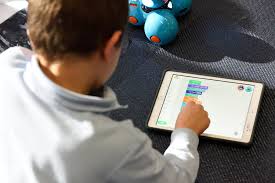What other games are suitable for students with special needs?
The 10 Best Toys and Games for Children with Special Needs
- Fidget Toys Sensory Bundle Set.
- Tumbling Monkeys.
- Bilibo Child Seat.
- Feelings in a Flash.
- Vtech Tote & Go Laptop.
- Teachable Touchable Texture Squares.
- Basic Skills Busy Board.
- Counting and Sorting Bears.
How do you entertain a special needs child?
Here are ten activities to try with your kids for creative fun and learning through play:
- Balloon Volleyball.
- Dig In.
- Find the Puzzle Piece.
- Fun in the Tub.
- Gelatin Fishbowl.
- Get Creative With Shaving Cream.
- Living Room Campout.
- Read Together.
How do you adapt a game for a disabled child?
Adapting common games so everyone can play
- Kids with disabilities want to play, just like any other kids. They want to interact, be active, socialize, make friends and join in the fun.
- Playing tag. Instead of trying to touch one another, use a safe and soft object like a foam pool noodle.
- Hide and seek.
How can I help my child with intellectual disability?
Tips for Parents
- Learn about intellectual disability.
- Be patient, be hopeful.
- Encourage independence in your child.
- Give your child chores.
- Give your child frequent feedback.
- Find out what skills your child is learning at school.
- Find opportunities in your community for social activities.
What other games are suitable for students with special needs? – Additional Questions
What are the 4 levels of intellectual disability?
In the past, medical professionals called this condition “mental retardation.” There are four levels of ID: mild. moderate.
Severe intellectual disability
- noticeable motor impairment.
- severe damage to, or abnormal development of, their central nervous system.
- generally having an IQ range of 20 to 34.
Can a child outgrow intellectual disability?
Intellectual disability is not a disease and cannot be cured, however early diagnosis and ongoing interventions can improve adaptive functioning throughout one’s childhood and into adulthood. With ongoing support and interventions, children with intellectual disability can learn to do many things.
How can we help intellectual disability?
10 Tips for Working With People With Intellectual Disabilities
- Do not call them kids.
- Use clear, simplified language and try speaking slower, not louder.
- Set expectations.
- Treat them as you would your peers.
- Draw boundaries.
- Ask them their thoughts and allow them to answer.
What is the most common cause of intellectual disability?
The most common known preventable or environmental cause of intellectual disability is fetal alcohol syndrome, the most common chromosomal cause is Down syndrome, and the most common genetic cause is Fragile X syndrome.
What are the learning needs of students with intellectual disabilities?
Some students may be easily distracted and need support with organisation, or they may find instructions with several steps hard to follow. Students with intellectual disability often prefer concrete learning tasks, and multi-modal or hands-on learning tasks. Communication and social skills.
What are 3 intellectual disabilities?
List of Potential Intellectual and/or Developmental Disabilities:
- ADHD.
- Apert Syndrome.
- Autism.
- Cerebral Palsy.
- Developmental Delay.
- Developmental Hearing Loss.
- Down Syndrome.
- Fetal Alcohol Spectrum Disorder.
Is ADHD an intellectual disability?
ADHD is considered a developmental disability, not a learning disability. Accommodations can often be made in the classroom or work environment to help people with ADHD be more successful. Therapy and medications are also helpful for managing the symptoms of ADHD.
What is the difference between an intellectual disability and a learning disability?
An intellectual disability is not the same as a learning disability, and these two terms have very different meanings. An intellectual disability refers to when someone has a developmental disorder such as autism, whereas a learning disability is referring to when someone has a learning disorder like dyslexia.
Is a learning disability a mental illness?
No, a Learning Disability is not a mental illness. Learning Disabilities are neurologically-based. They result from “faulty wiring” in specific areas of the brain.
Is a learning disability considered special needs?
The special educational requirements of those with learning difficulties, emotional or behavioral problems, or physical disabilities. So it appears that they are educational requirements.
Is a learning disability considered a disability?
Is a Learning Disability a Disability? Social Security recognizes learning disabilities as disabling medical conditions under listing 112.11, for “neurodevelopmental disorders.” This listing applies to dyslexia (reading difficulties), dyscalculia (math difficulties), and other types of specific learning problems.
What are the 4 types of learning disabilities?
Learning disabilities usually fall within four broad categories:
- Spoken language-listening and speaking.
- Written language-reading, writing, and spelling.
- Arithmetic-calculation and concepts.
- Reasoning-organization and integration of ideas and thoughts.
What are the top 5 learning disabilities?
Keep reading to find out the 5 most common learning disabilities special education and their symptoms.
- Dyslexia. Dyslexia is probably the number one learning disorder auditory processing, visual processing disorders may have trouble that affects children and adults.
- ADHD.
- Dyscalculia.
- Dysgraphia.
- Dyspraxia.
What are the 7 learning disabilities?
In particular, psychology professionals should study these seven learning disabilities:
- Dyslexia.
- Dysgraphia.
- Dyscalculia.
- Auditory processing disorder.
- Language processing disorder.
- Nonverbal learning disabilities.
- Visual perceptual/visual motor deficit.
What is ADHD learning disability?
A disorder that includes difficulty staying focused and paying attention, difficulty controlling behavior and hyperactivity.
What causes slow learning disability?
Psychological trauma or abuse in early childhood may affect brain development and increase the risk of learning disorders. Physical trauma. Head injuries or nervous system infections might play a role in the development of learning disorders. Environmental exposure.
What is the most common learning disability?
The most common learning disorder is dyslexia, affecting approximately 80 to 90 percent of all learning disorders.




